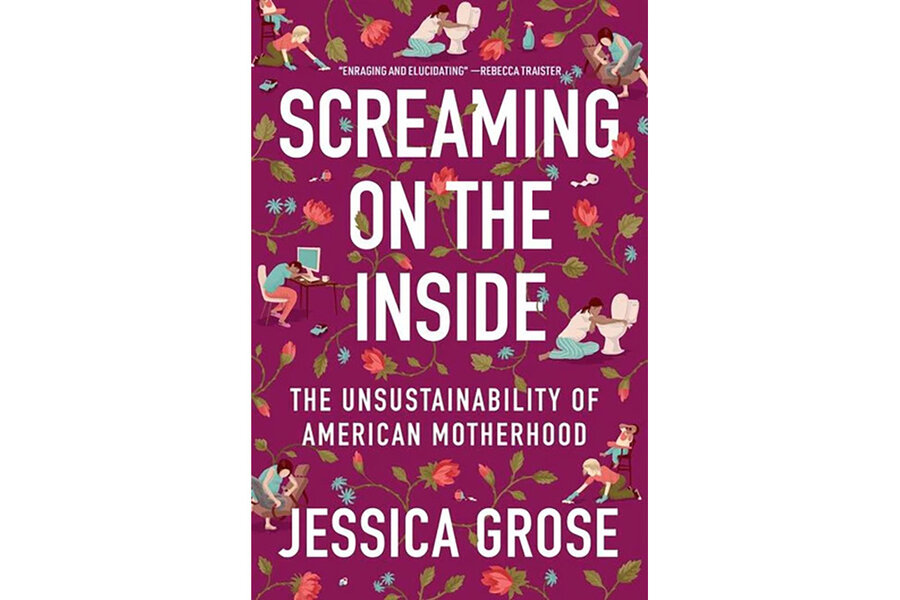Can society move beyond unachievable standards of motherhood?
Loading...
One of the most unfortunate neologisms to make its way into the lexicon in recent years is “momfluencer,” the term describing mothers who post immaculate photos of their families and their homes on social media to inspire their legions of followers – and to sell some advertiser-sponsored products along the way.
In “Screaming on the Inside: The Unsustainability of American Motherhood,” New York Times opinion writer Jessica Grose demonstrates that the momfluencer is only the latest in a long line of cultural forces to popularize and romanticize the impossible standards to which American mothers are held. She argues that there have been “more than two hundred years of unrealistic, elitist, and bigoted expectations,” adding that “they shape-shift; they reflect whatever is in vogue – but at their core is always self-abnegation.”
In other words, we've heard some version of this story before, and there is a vast library of work examining the insidious ideals surrounding motherhood and domesticity. Grose cites Stephanie Coontz’s “The Way We Never Were,” Ann Crittenden’s “The Price of Motherhood,” and many other popular and academic books and articles in her bibliography. But her compelling and sharp account brings the issue up to date, exploring pregnancy and motherhood in the age of social media and delineating the additional burdens imposed by the COVID-19 pandemic. It will likely appeal to mothers of young children or to people considering becoming parents.
The author’s interviews with a wide range of mothers make up the heart of the book. Regardless of whether they work full- or part-time or stay at home, and regardless of their race or socioeconomic status, her interviewees report feeling guilty, stressed out, and overwhelmed. Grose provides meaningful context to their angst, arguing that women are buckling under the pressures of being, in most cases, the primary caretakers of children and juggling their own work obligations in the absence of social supports like paid parental leave or adequate child care. The pandemic – during which “much of the additional domestic work required when schools, day care, and family caretaking systems fell apart was left to mothers” – made a bad situation worse.
Grose also tells her own story in “Screaming on the Inside.” Her first pregnancy was so difficult that she felt she had no choice but to quit her job at a culture website. (Because she had held the position for less than a year before getting pregnant, she would not have been eligible for the Family and Medical Leave Act’s 12 weeks of unpaid leave.) Ten years later, she writes, “I still feel like I failed at some essential test of motherhood, before I even had a baby to care for.”
Much of the book paints a similarly bleak picture. In the chapter on pregnancy, for instance, Grose writes that “all the women I spoke to envisioned a time of perfect happiness and Instagrammable beauty.” Instead, however, “Most women I spoke to felt like they were failing on every possible level, inside and out. They described falling short of what their families, workplaces, and our culture wanted from them when they were publicly performing pregnancy.” As someone who remembers pregnancy as an often gratifying time punctuated by a fair share of the condition’s common discomforts, I’m not sure what is more startling: the idea that her scores of interviewees went into it with such starry-eyed expectations or the idea that most of them ended up feeling so bad about themselves while pregnant.
Grose’s tone shifts when she begins to address solutions to the problems she’s laid out. “There is not a single change we can make that will be a panacea,” she observes. “The changes have to be multipronged – a combination of political shifts, workplace shifts, and interpersonal shifts.” Citing positive signs – like widespread support for paid leave for all caregivers, not only mothers – she concludes, “I think we have reasons to be optimistic on all three fronts.”
In addition to focusing on structural change, Grose offers a piece of personal advice in what is perhaps the book’s most sensible passage: “Anytime you feel guilty about not meeting some sort of insane, unachievable demand, ask yourself: Does this help me improve my relationship with my children? And does this help my community? If the answer is neither, push back.” The myths surrounding motherhood are persistent, but the author empowers readers with the idea that they can help create change. One place to start: If the momfluencers’ Instagram posts make you feel inadequate, quit scrolling.








